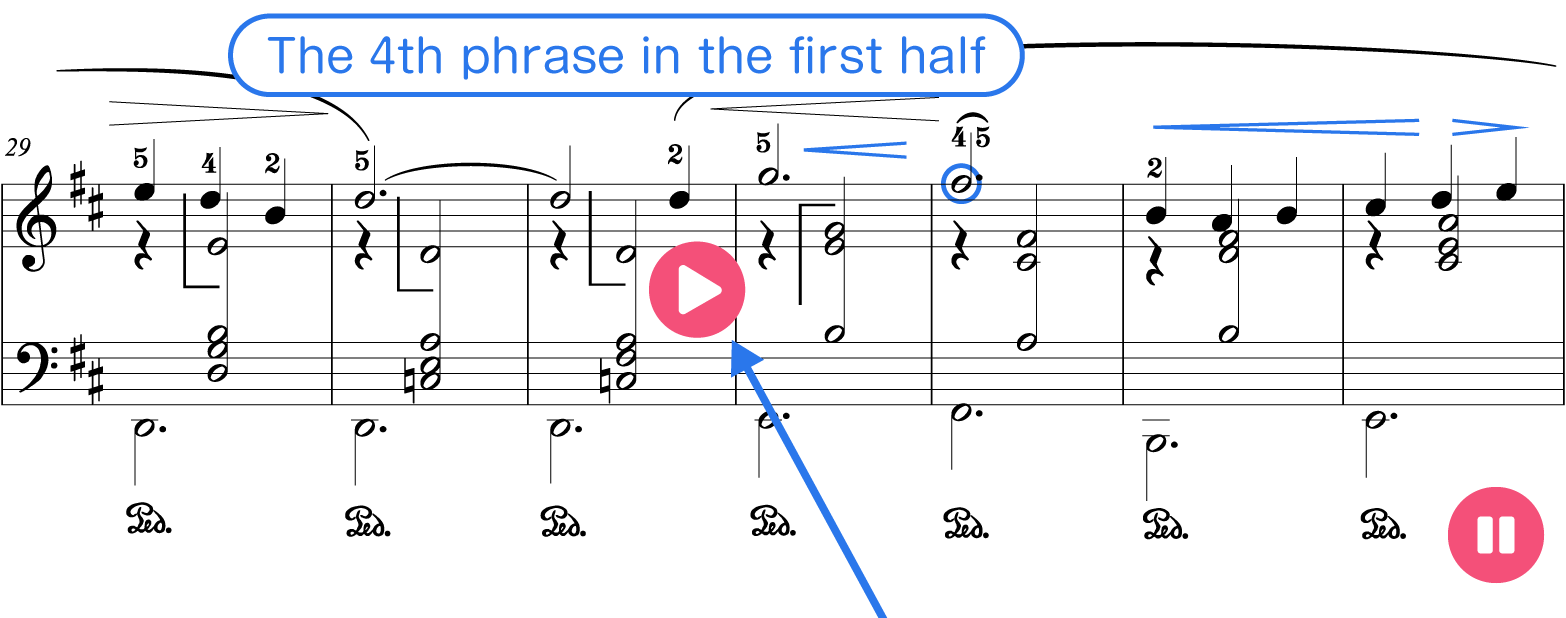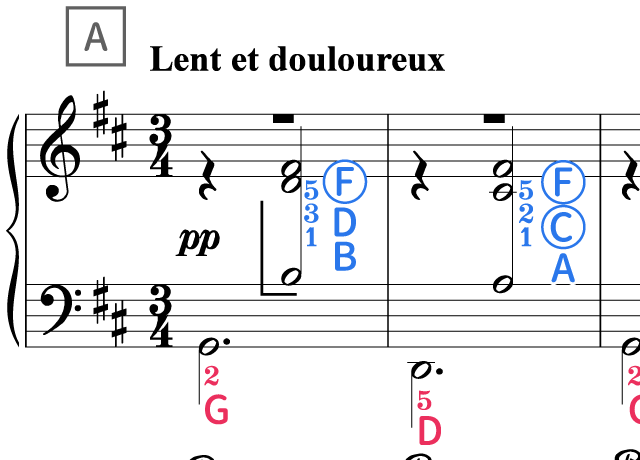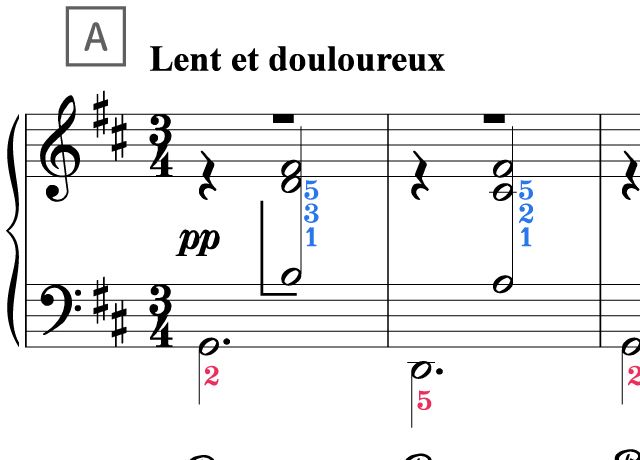How To Play (How To Practice)
1. Level : 2(Easy 2)
For adults,2. (Beacause of slow tempo.)
For children,
3,4. (Because of the wide range and some complicated chords.)
2. The First Half
1. Play The Right Hand Part Without Looking At The Keys
In this piece, the left hand part is a little bit difficult.
So, for playing with both hands, it is very helpful to memorize the right hand part and to play it without looking at the keys.
You should master the hand posture by the correct fingering and improve your playing!
Please refer to the finger numbers sheet!


2. Tips For Jumping Of The Left Hand
1. Move Your Chair Backward Slightly
In the left hand part, you have to move your left hand to the high range.
To jump easily, try moving your chair backward slightly.
At least put your elbows in front of the body.
2. Preparation In The Air
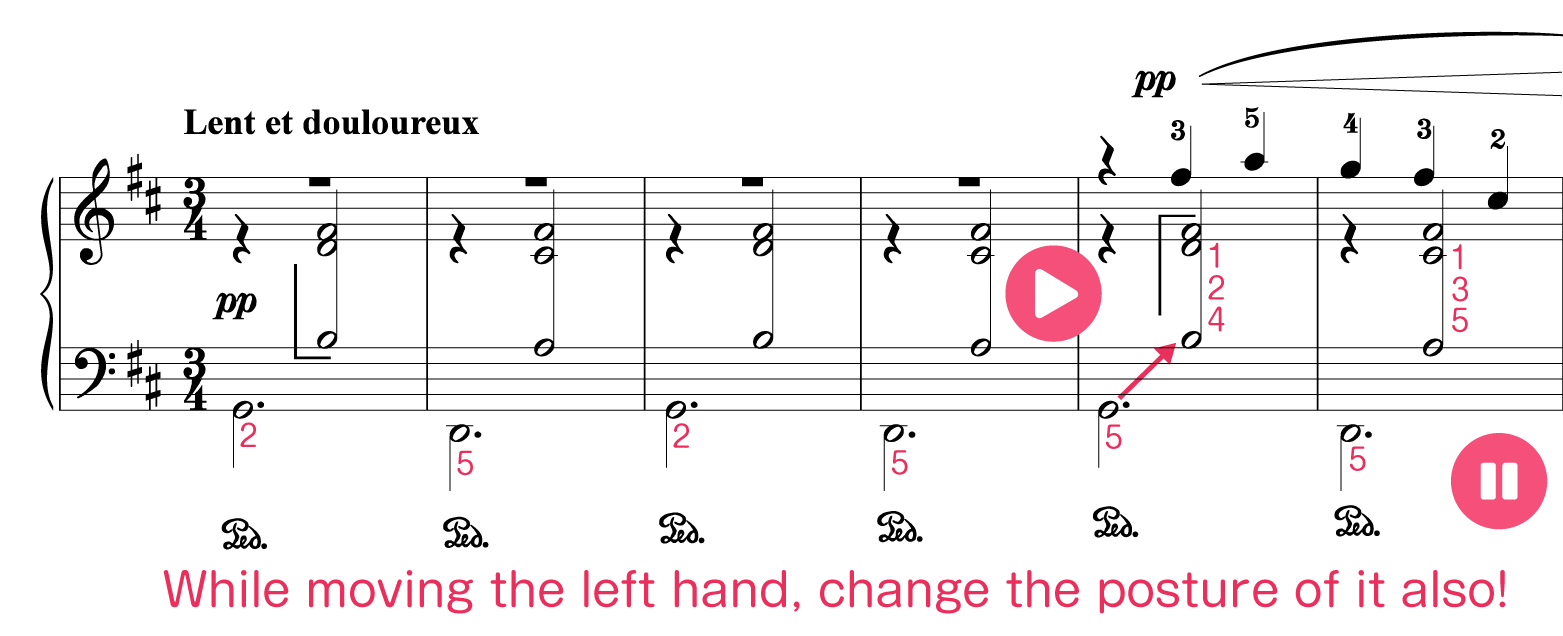
For your far better playing, be careful of your hand's speed.
Continue pp after jumping.
So jump quickly and prepare for the next chord.
Try to play softly as possible as you can but not to miss making the sound.
Could you make it, or not?
It is very delicate and far more difficult than ff.
Pianos are made to be able to make loud sounds. So be careful of controling dynamics. Please don't think
p is kind of low,
f is kind of loud.
And change the dynamics dramatically.
Practicing, you will find "just" playing easy. So how about trying to control soft sound?
3. Memorize The Key Names
There are several ways of memorizing the sheet.
Most of the beginners memorize it with kinesthesis.
Basically, a sense of hands or arms movement.
But the chords in this piece are little bit difficult. So it is hard to jump from chord to chord with only a sense of hands or arms.
Try to memorize "the key names" of complicated parts, especially the phrase below.
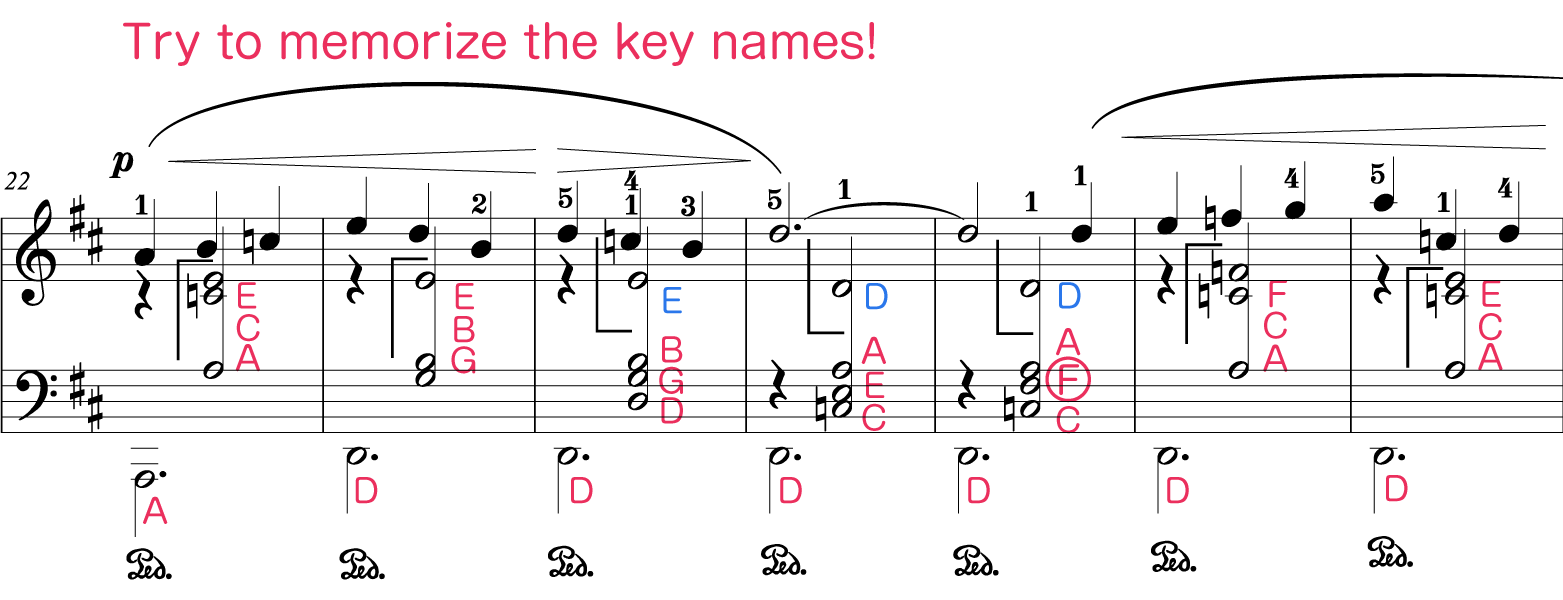
4. Tips For Fingering
If your hands are small, don't worry!
No problem because you can help the left hand play the chord using the right hand!
You can play without difficulty by this fingering even if you have trouble reaching an octave.
We recommend this fingering confidently!
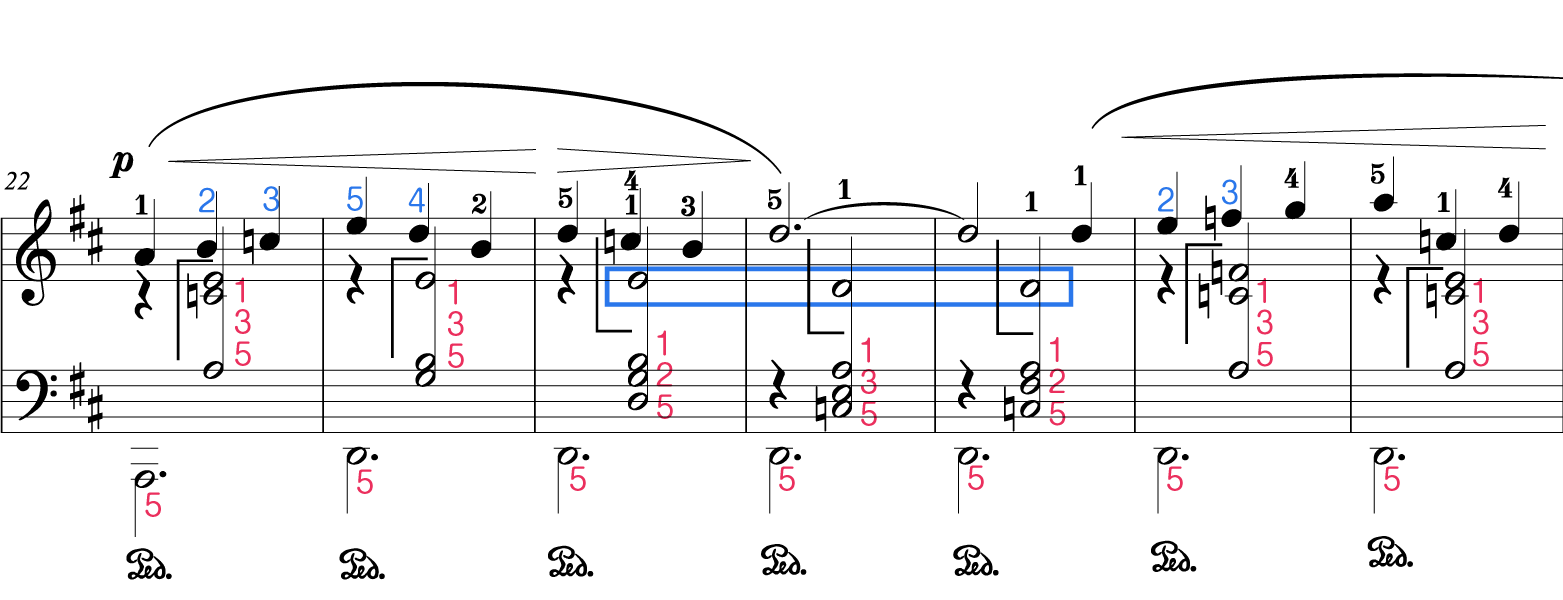
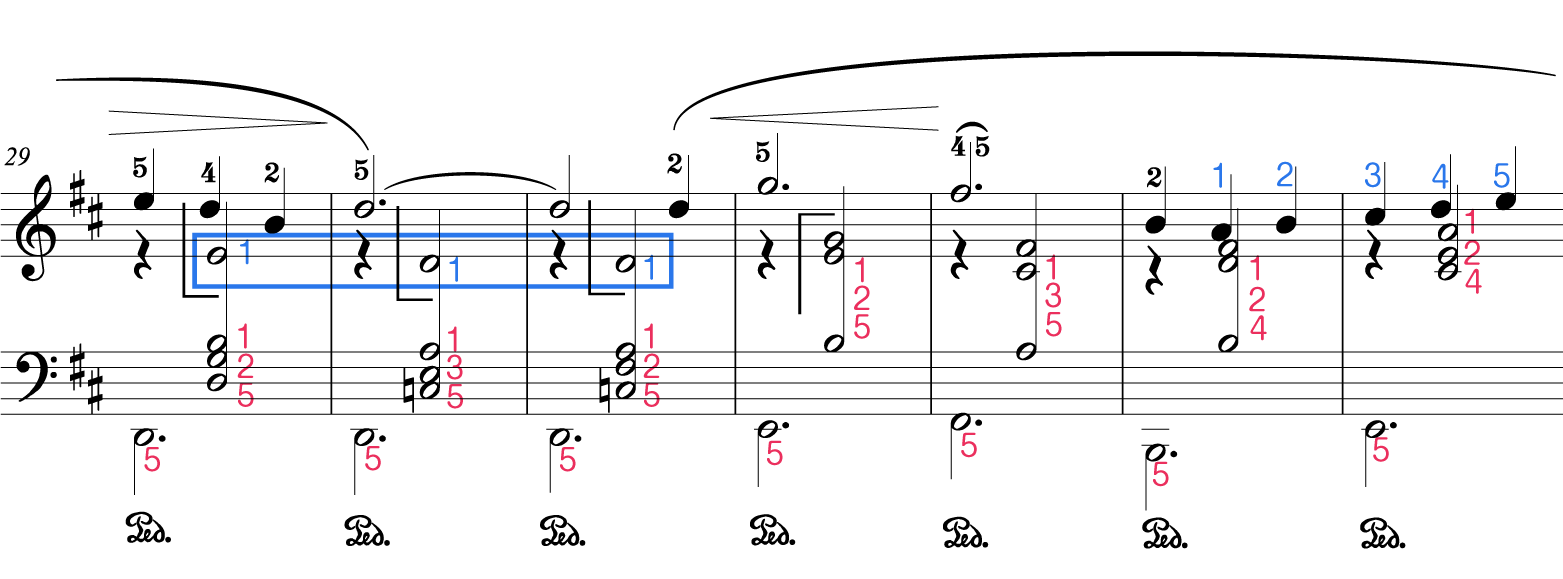
3. The Second Half
1. Feel and Express The Difference Between (GF#) And (GF)!
For your moving performance, you should contrast differences between the first half and the second.
Heading to f♮, you should soften (GF) in the second half, contrasting the expansion of (GF#) in the first.
Listening to our recording, maybe you think (G) is too loud, but listen to (F), you'll recognize it as preparation for softening the phrase.
Some other articulations are writen in the sheet.
Express other differences of nuances,too!
